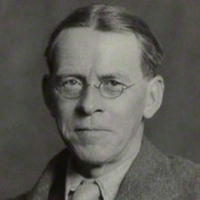Lascelles Abercrombie
Lascelles Abercrombie (also known as the Georgian Laureate, linking him with the “Georgian poets”; 9 January 1881– 27 October 1938) was a British poet and literary critic, one of the “Dymock poets”. He was born in Ashton upon Mersey, Sale, Cheshire and educated at Malvern College, and at Owens College.
Lascelles Abercrombie (also known as the Georgian Laureate, linking him with the “Georgian poets”; 9 January 1881– 27 October 1938) was a British poet and literary critic, one of the “Dymock poets”. He was born in Ashton upon Mersey, Sale, Cheshire and educated at Malvern College, and at Owens College.


